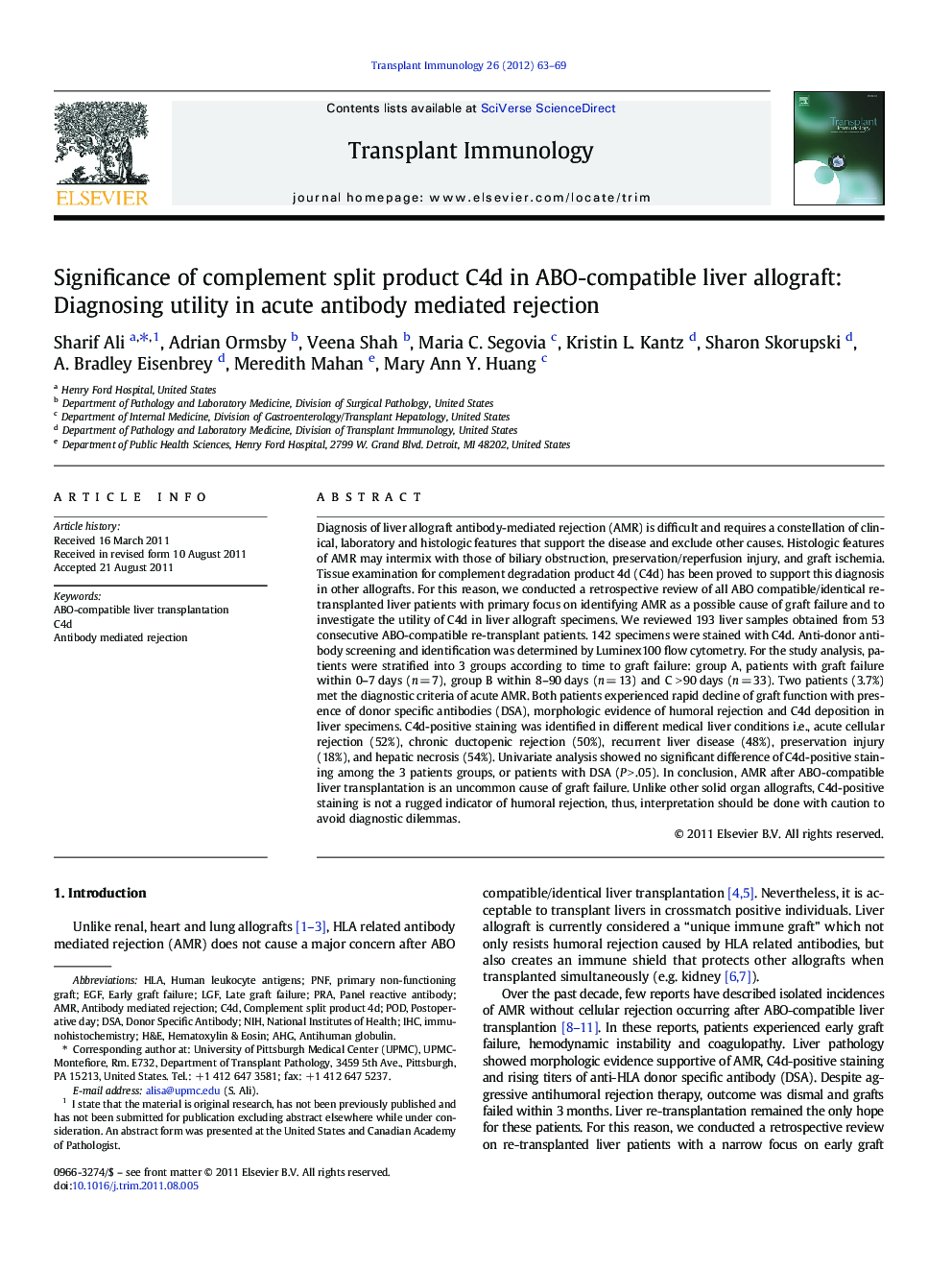| کد مقاله | کد نشریه | سال انتشار | مقاله انگلیسی | نسخه تمام متن |
|---|---|---|---|---|
| 3392233 | 1221204 | 2012 | 8 صفحه PDF | دانلود رایگان |

Diagnosis of liver allograft antibody-mediated rejection (AMR) is difficult and requires a constellation of clinical, laboratory and histologic features that support the disease and exclude other causes. Histologic features of AMR may intermix with those of biliary obstruction, preservation/reperfusion injury, and graft ischemia. Tissue examination for complement degradation product 4d (C4d) has been proved to support this diagnosis in other allografts. For this reason, we conducted a retrospective review of all ABO compatible/identical re-transplanted liver patients with primary focus on identifying AMR as a possible cause of graft failure and to investigate the utility of C4d in liver allograft specimens. We reviewed 193 liver samples obtained from 53 consecutive ABO-compatible re-transplant patients. 142 specimens were stained with C4d. Anti-donor antibody screening and identification was determined by Luminex100 flow cytometry. For the study analysis, patients were stratified into 3 groups according to time to graft failure: group A, patients with graft failure within 0–7 days (n = 7), group B within 8–90 days (n = 13) and C > 90 days (n = 33). Two patients (3.7%) met the diagnostic criteria of acute AMR. Both patients experienced rapid decline of graft function with presence of donor specific antibodies (DSA), morphologic evidence of humoral rejection and C4d deposition in liver specimens. C4d-positive staining was identified in different medical liver conditions i.e., acute cellular rejection (52%), chronic ductopenic rejection (50%), recurrent liver disease (48%), preservation injury (18%), and hepatic necrosis (54%). Univariate analysis showed no significant difference of C4d-positive staining among the 3 patients groups, or patients with DSA (P > .05). In conclusion, AMR after ABO-compatible liver transplantation is an uncommon cause of graft failure. Unlike other solid organ allografts, C4d-positive staining is not a rugged indicator of humoral rejection, thus, interpretation should be done with caution to avoid diagnostic dilemmas.
Journal: Transplant Immunology - Volume 26, Issue 1, January 2012, Pages 62–69